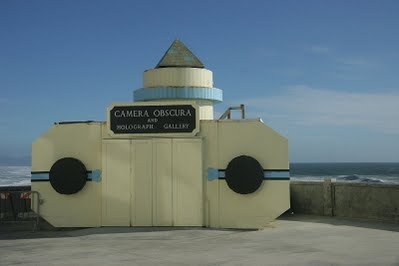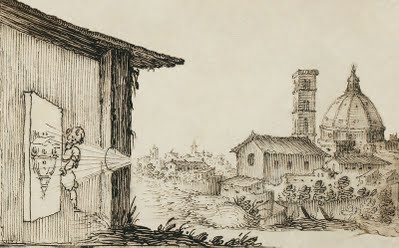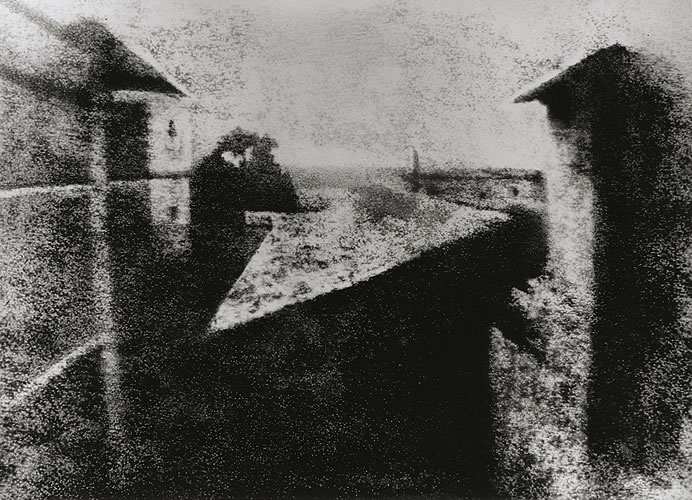The beginnings of photography can be traced back as far as 5BC to the Chinese philosopher Mo Ti who first documented the phenomena that was later to be popularized as the ‘Camera Obscura’, (Latin for darkened vault or room). Others, including Aristotle made similar observations but it was not until 10AD that Alhazen in his book on Optics in 1021, made the connection between the principle of the Camera Obscura and human vision.
Your preliminary overview should take you from the initial early observations of the inversion of an image in a darkened chamber through to the work of George Eastman in the late 1800’s. This will cover the Camera Obscura, Camera Lucinda, Thomas Wedgewood, Johanne Shultz, Joesph Neipce, Louis Daguerre, Collodion Process, Dry Plate and Roll film.
A BRIEF HISTORY
A basic overview of developments that are related to photography extends well beyond the early experiments with light sensitive materials. Surprisingly the earliest documented observations of what we now call the principles of photography, the principle of inversion that Camera Obscura is based on, occur in the earliest part of the last millennium. The earliest documented observations come from Mo Ti (5BC) in China and Al-Hazen, an Arabian scientist / philosopher in the 10th Century (who is also credited with linking the process of seeing, the way the eye works, to the principle of the Camera Obscura) . There is an extensive collection of information on the web regarding the contribution of these two men, however dates differ slightly depending on the author.
The term Camera Obscura simply means ‘darkened room’ and there is extensive documentation on its development and use. The image below shows a cutaway view with the light coming in through the wall via a basic aperture and being projected onto a surface. Whilst the image is inverted it still retains its proportion and colour. In the early 1500’s darkened rooms were constructed with a lens in the wall through which the image outside the room was projected onto a suspended sheet of translucent paper. People would be charged a small fee to be able to come inside and view the moving picture. Early cinema?
 image distributed under Creative Commons 3 license
image distributed under Creative Commons 3 license
The natural progression from the Camera Obscura were aids to drawing known as the Camera Lucinda and the Camera Lucida. Both of these enabled artists to trace views projected onto paper using mirrors.
The next significant developments occurred during the 18th and 19th centuries when Joseph Schulze creates the first photosensitive compound in 1727 and Thomas Wedgwood succeeds in making images appear on leather treated with silver nitrate (1800). However the images faded rapidly when exposed to light.
In 1826 Niepce creates the first permanent image on metal plate treated with bitumen of Judea. Niepce had been experimenting for a number of years with light sensitive solutions. His earliest attempts included rudimentary photo etching processes with light sensitive varnishes on glass and transferring the image via contact printing.
A description of the process is as follows..
“In 1822, Niépce coated a glass plate with bitumen and exposed it by contact under an engraving of Pope Pius VII. The engraving had been oiled to make the paper nearly transparent. The sunlight passing through the clear portions hardened the coating to the glass, but those portions shadowed by the lines of the engraving remained soluble. When developed in the oil of lavender the unhardened portions dissolved away, leaving a clear, fine-lined imaged. Viewed by transmitted light the image was composed of bright lines in the darker field of the remaining opaque coating on the glass; when held against a dark surface and lighted from the front, the image looked black in its surrounding light gray field. This first permanent example of a heliograph was destroyed during an attempt to copy it some years later.”
Sourced at http://www.hrc.utexas.edu/exhibitions/permanent/wfp/heliography.html
Niepce had more success in 1824 with an engraving stone, but this did not survive and there is no record of it other than this letter to his brother describing the event.
“I have the satisfaction of being able to tell you that through an improvement in my process I have succeeded in obtaining a picture as good as I could wish. It was taken from your room at Le Gras with my biggest camera and my largest stone. The objects appear with astonishing sharpness and exactitude down to the smallest details and finest gradations. As the image is almost colourless, one can judge it only by holding it at an angle, and I can tell you the effect is downright magical.” —Joseph Nicéphore Niépce’s letter to his brother, Claude. 16 September 1824.
In 1826 Niepce successfully captured a view from the window of his brothers room in the family home overlooking Le Gras. He wrote to his brother describing the discovery..
Joseph Neipce | View from the window at Gras 1826 @ www.hrc.utexas.edu
to be continued..









